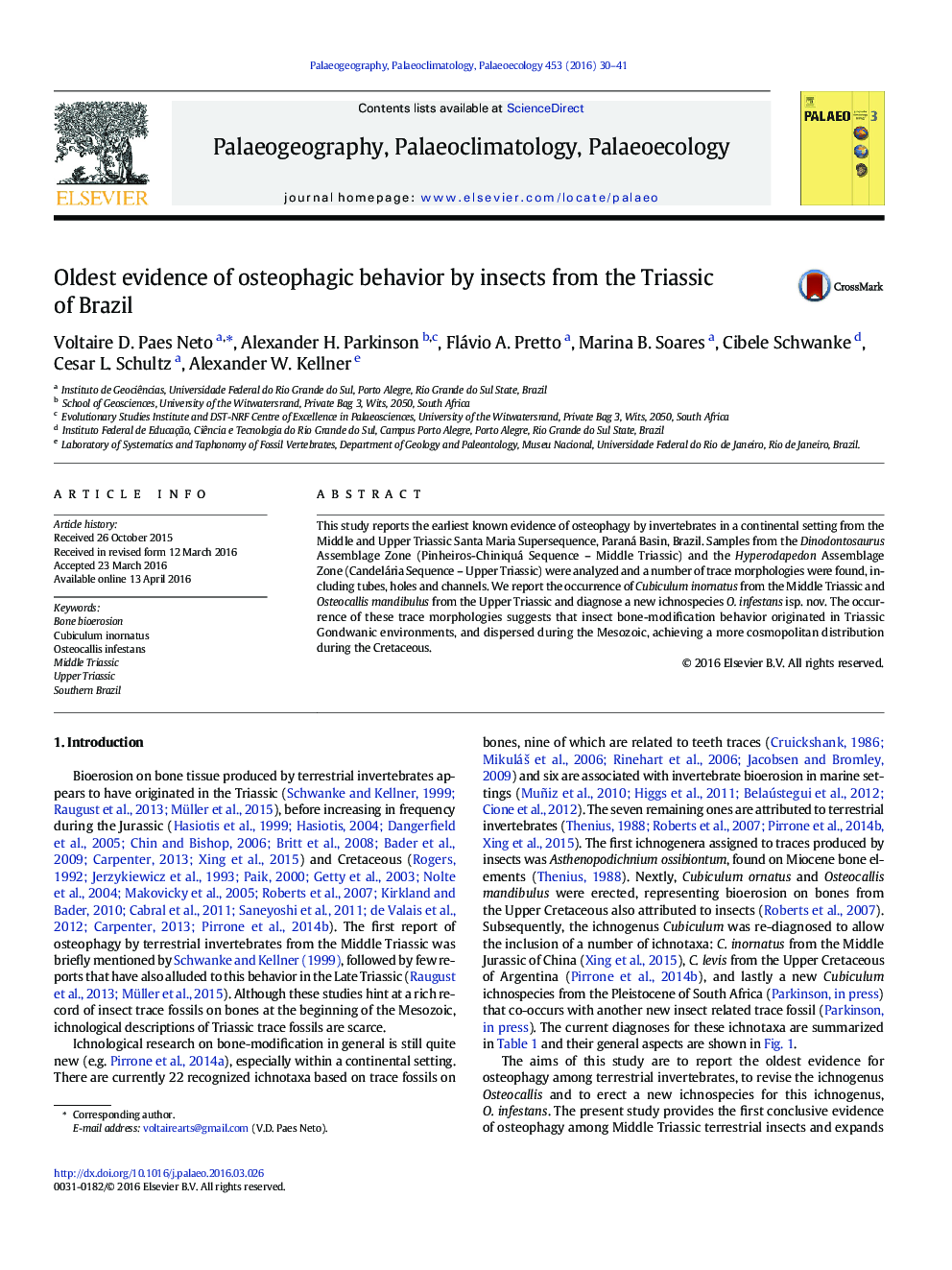| کد مقاله | کد نشریه | سال انتشار | مقاله انگلیسی | نسخه تمام متن |
|---|---|---|---|---|
| 4465697 | 1622138 | 2016 | 12 صفحه PDF | دانلود رایگان |

• Insect related traces were found on Middle and Late Triassic vertebrate bones
• It represents the oldest record of insect osteophagic behavior
• We increase the time range of Cubiculum inornatus and Osteocallis mandibulus
• A new ichnospecies, Osteocallis infestans, are proposed
• Suggesting a complex hole for carrion insects on Triassic Gondwanic environments
This study reports the earliest known evidence of osteophagy by invertebrates in a continental setting from the Middle and Upper Triassic Santa Maria Supersequence, Paraná Basin, Brazil. Samples from the Dinodontosaurus Assemblage Zone (Pinheiros-Chiniquá Sequence – Middle Triassic) and the Hyperodapedon Assemblage Zone (Candelária Sequence – Upper Triassic) were analyzed and a number of trace morphologies were found, including tubes, holes and channels. We report the occurrence of Cubiculum inornatus from the Middle Triassic and Osteocallis mandibulus from the Upper Triassic and diagnose a new ichnospecies O. infestans isp. nov. The occurrence of these trace morphologies suggests that insect bone-modification behavior originated in Triassic Gondwanic environments, and dispersed during the Mesozoic, achieving a more cosmopolitan distribution during the Cretaceous.
Journal: Palaeogeography, Palaeoclimatology, Palaeoecology - Volume 453, 1 July 2016, Pages 30–41